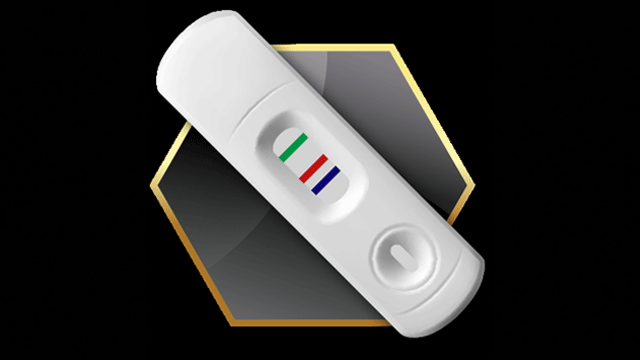How the Integration of Lateral Flow Tests and Data Analytics Will Transform Healthcare

Complete the form below to unlock access to ALL audio articles.
The lateral flow immunoassay has been the backbone of point-of-care diagnostics for more than 30 years. Test developers are now using the latest digital technology to take the performance of lateral flow diagnostics to the next level to meet changing demands and to tackle some of the biggest problems facing the 21st century.
Lateral flow has evolved from humble beginnings to a billion-dollar industry
The technology as we know it today was first developed in the late 1980s by researchers who were trying to develop a platform for an over-the-counter home pregnancy test. However, the roots of lateral flow go back to the 1960s, with the discovery of the antibody-antigen immunoassay reaction combined with thin layer chromatography.Low-cost, easy to use and negating the need for expensive specialist lab equipment, these versatile paper-based strip tests have since proved perfect for a wide range of point-of-care diagnostic applications across a variety of sectors, including human health, animal health, environmental and agri-food. Today the lateral flow diagnostic test market is huge and growing. It was worth an estimated US$6 bn in 2018, and with a compound annual growth rate of 7.7% it will be worth US$8.7 bn in 2023.
One of the most exciting developments in this area is in the incorporation of diagnostics and big data, particularly in human health.
Big data is a term used to describe very large and often complex volumes of data that involve the use of advanced data analytics, often driven by machine learning and artificial intelligence (AI), to extract valuable information. Big data is set to revolutionize healthcare across the world, giving unparalleled insight into patient health and wellbeing, providing evidence for improved interventions and where best to target dwindling resources and empowering health authorities and practitioners.
At a system level, data-driven insight has the potential to help cut costs and identify new sources of revenue, while at a patient level it could transform personalized medicine and proactive care.
 Image credit: Sona Nanotech
Image credit: Sona NanotechHow a digital boost to lateral flow could aid global health efforts
Advancements in digital healthcare have the potential to transform the doctor-patient relationship and put patients in control of their own health outcomes.So, what role can a humble 30-year-old paper-based technology play in this brave new world of machine learning, AI and data analytics?
Well, lateral flow immunoassay technology has come a long way in recent years. Since the original patents started expiring in 2006 there have been and continue to be many innovations, from new reagents and labels to the development of multiplexed tests (i.e. more than one test on the same strip). Advancements in material technology and manufacturing processes mean tests are now more sensitive and have better overall performance than ever before.
More recently several companies have started developing digital reader systems to produce rapid, fully quantitative results from their assays, turning a simple yes/no readout into a ‘how far along’ or ‘x level of infection’ readout.
Now the next generation of technology is connecting these readers via Wi-Fi or Bluetooth to devices such as smartphones, or are using the smartphone itself, where data can be processed before being stored securely in the cloud for later analysis.
The benefits for healthcare are enormous. Take, for example, an outbreak of a disease. Lateral flow tests could be used anywhere in the field, in any setting, by health practitioners or even patients themselves, to collect samples (e.g. blood, urine, saliva, stool) to test for the disease.
Thanks to the rapid nature of the test, the health care practitioner and patient would immediately know if they have contracted the disease, and with a quantitative test they can gain further understanding of the progression of the disease.
Not only can health practitioners then immediately act on this information to deliver treatment on the ground, but at the same time, test results, along with other health data about the patient (e.g. age, gender, weight, etc.) and their location could be gathered via a smartphone app, stored on a secure cloud server and shared with key stakeholders, including the patient themselves.
There, data from hundreds, thousands, maybe even millions of other patients could be accessible by health authorities and other agencies monitoring outbreaks to give them an accurate picture of the spread of the disease and the type of people it is affecting.
An integrated approach would aid preventative strategies
Using this data, preventative treatments like vaccinations could be strategically deployed and the outbreak could be contained or curtailed.Further analysis of the data using machine learning and AI may help authorities prevent future disease outbreaks, or at least be as prepared as possible for them.
Lateral flow assays would no longer be just standalone tests but part of an integrated, data-driven diagnostic system that has widespread implications for the future of human health. And of course, such systems would be suitable for other sectors, including military and defence, animal diagnostics, environmental and agri-food.
Many companies in the lateral flow space are already making moves in this direction by working together collaboratively to expand their offering. For example, companies are partnering that offer complementary technology, such as test reader devices and app and cloud-based data management systems.
Lateral flow has always been a collaborative technology, and I think we will see more of this to meet the changing demands of data-driven healthcare.
So, lateral flow might be more than 30 years old, but its potential is only just beginning to be explored.
Darren Rowles is CEO and president of Sona Nanotech, a life sciences company based in Nova Scotia, Canada. He has 15 years of experience in product manufacture and development in the area of gold nanoparticles and lateral flow diagnostics.

